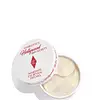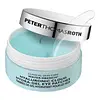What's inside
What's inside
 Key Ingredients
Key Ingredients

 Benefits
Benefits

 Concerns
Concerns

 Ingredients Side-by-side
Ingredients Side-by-side

Water
Skin ConditioningGlycerin
HumectantChondrus Crispus Powder
AbrasiveCalcium Chloride
Astringent1,2-Hexanediol
Skin ConditioningButylene Glycol
HumectantCeratonia Siliqua Gum
EmollientHydroxyacetophenone
AntioxidantPentylene Glycol
Skin ConditioningXanthan Gum
EmulsifyingPolyglyceryl-10 Laurate
Skin ConditioningPhenoxyethanol
PreservativeAllantoin
Skin ConditioningEthylhexylglycerin
Skin ConditioningSynthetic Fluorphlogopite
Sodium Phytate
Parfum
MaskingTin Oxide
AbrasiveCI 77891
Cosmetic ColorantPropanediol
SolventHydroxyethylcellulose
Emulsion StabilisingIpomoea Batatas Root Extract
Skin ConditioningColeus Forskohlii Root Extract
EmollientTrehalose
HumectantUrea
BufferingSerine
MaskingMicrococcus Lysate
Skin ConditioningAlgin
MaskingCaprylyl Glycol
EmollientDisodium Phosphate
BufferingGlyceryl Polyacrylate
Potassium Phosphate
BufferingPullulan
Sodium Hyaluronate
HumectantWater, Glycerin, Chondrus Crispus Powder, Calcium Chloride, 1,2-Hexanediol, Butylene Glycol, Ceratonia Siliqua Gum, Hydroxyacetophenone, Pentylene Glycol, Xanthan Gum, Polyglyceryl-10 Laurate, Phenoxyethanol, Allantoin, Ethylhexylglycerin, Synthetic Fluorphlogopite, Sodium Phytate, Parfum, Tin Oxide, CI 77891, Propanediol, Hydroxyethylcellulose, Ipomoea Batatas Root Extract, Coleus Forskohlii Root Extract, Trehalose, Urea, Serine, Micrococcus Lysate, Algin, Caprylyl Glycol, Disodium Phosphate, Glyceryl Polyacrylate, Potassium Phosphate, Pullulan, Sodium Hyaluronate
Water
Skin ConditioningGlycerin
HumectantButylene Glycol
HumectantSodium Hyaluronate
HumectantHydrolyzed Collagen
EmollientCaffeine
Skin ConditioningCeramide NP
Skin ConditioningArnica Montana Flower Extract
MaskingAlthaea Officinalis Root Extract
Skin ConditioningAllantoin
Skin ConditioningTocopherol
AntioxidantHydrolyzed Sodium Hyaluronate
Skin ConditioningButyrospermum Parkii Butter
Skin ConditioningGlycyrrhiza Glabra Root Extract
BleachingScutellaria Baicalensis Root Extract
AstringentAngelica Gigas Root Extract
Skin ConditioningCimicifuga Racemosa Root Extract
AntimicrobialMorus Alba Bark Extract
Skin ConditioningPaeonia Lactiflora Root Extract
Skin ConditioningPhellinus Linteus Extract
Skin ConditioningPolygonum Multiflorum Root Extract
Skin ConditioningSesamum Indicum Seed Extract
Skin ConditioningSophora Angustifolia Root Extract
Skin ConditioningAloe Barbadensis Leaf Juice
Skin ConditioningRicinus Communis Seed Oil
MaskingAmorphophallus Konjac Root Powder
AbrasiveCarrageenan
Hydroxyacetophenone
AntioxidantHexylene Glycol
EmulsifyingPropanediol
SolventXylitylglucoside
HumectantSucrose
HumectantAnhydroxylitol
HumectantGlyceryl Caprylate
EmollientXylitol
HumectantBetaine
HumectantEthylhexylglycerin
Skin ConditioningGlucose
HumectantLecithin
EmollientMaltodextrin
AbsorbentMagnesium Aspartate
Skin ConditioningZinc Gluconate
Skin ConditioningAluminum Hydroxide
EmollientCopper Gluconate
Skin ConditioningPEG-60 Hydrogenated Castor Oil
EmulsifyingGellan Gum
Cyamopsis Tetragonoloba Gum
Emulsion StabilisingCeratonia Siliqua Gum
EmollientCalcium Chloride
AstringentTin Oxide
AbrasiveSynthetic Fluorphlogopite
Bis(Glycidoxyphenyl)Propane/Bisaminomethylnorbornane Copolymer
Caprylhydroxamic Acid
Disodium EDTA
1,2-Hexanediol
Skin ConditioningEthyl Hexanediol
SolventChlorphenesin
AntimicrobialPhenoxyethanol
PreservativeMica
Cosmetic ColorantCI 42090
Cosmetic ColorantCI 77891
Cosmetic ColorantCI 77491
Cosmetic ColorantWater, Glycerin, Butylene Glycol, Sodium Hyaluronate, Hydrolyzed Collagen, Caffeine, Ceramide NP, Arnica Montana Flower Extract, Althaea Officinalis Root Extract, Allantoin, Tocopherol, Hydrolyzed Sodium Hyaluronate, Butyrospermum Parkii Butter, Glycyrrhiza Glabra Root Extract, Scutellaria Baicalensis Root Extract, Angelica Gigas Root Extract, Cimicifuga Racemosa Root Extract, Morus Alba Bark Extract, Paeonia Lactiflora Root Extract, Phellinus Linteus Extract, Polygonum Multiflorum Root Extract, Sesamum Indicum Seed Extract, Sophora Angustifolia Root Extract, Aloe Barbadensis Leaf Juice, Ricinus Communis Seed Oil, Amorphophallus Konjac Root Powder, Carrageenan, Hydroxyacetophenone, Hexylene Glycol, Propanediol, Xylitylglucoside, Sucrose, Anhydroxylitol, Glyceryl Caprylate, Xylitol, Betaine, Ethylhexylglycerin, Glucose, Lecithin, Maltodextrin, Magnesium Aspartate, Zinc Gluconate, Aluminum Hydroxide, Copper Gluconate, PEG-60 Hydrogenated Castor Oil, Gellan Gum, Cyamopsis Tetragonoloba Gum, Ceratonia Siliqua Gum, Calcium Chloride, Tin Oxide, Synthetic Fluorphlogopite, Bis(Glycidoxyphenyl)Propane/Bisaminomethylnorbornane Copolymer, Caprylhydroxamic Acid, Disodium EDTA, 1,2-Hexanediol, Ethyl Hexanediol, Chlorphenesin, Phenoxyethanol, Mica, CI 42090, CI 77891, CI 77491
 Reviews
Reviews

Ingredients Explained
These ingredients are found in both products.
Ingredients higher up in an ingredient list are typically present in a larger amount.
1,2-Hexanediol is a synthetic liquid and another multi-functional powerhouse.
It is a:
- Humectant, drawing moisture into the skin
- Emollient, helping to soften skin
- Solvent, dispersing and stabilizing formulas
- Preservative booster, enhancing the antimicrobial activity of other preservatives
Allantoin is a soothing ingredient known for its protective and moisturizingg properties. Because of this, it is often added to products with strong active ingredients.
Studies show higher concentrations of this ingredient can promote wound healing.
Though it can be derived from the comfrey plant, allantoin is produced synthetically for cosmetic products to ensure purity.
Learn more about AllantoinButylene Glycol (or BG) is used within cosmetic products for a few different reasons:
Overall, Butylene Glycol is a safe and well-rounded ingredient that works well with other ingredients.
Though this ingredient works well with most skin types, some people with sensitive skin may experience a reaction such as allergic rashes, closed comedones, or itchiness.
Learn more about Butylene GlycolCalcium chloride is a white, odorless, crystalline solid. It is an astringent and can be used to change the viscosity of products.
This ingredient is highly soluble in water, acetic acid, and ethanol.
There are many forms of this ingredient, including monohydrate, dihydrate, tetrahydrate, and hexahydrate.
Learn more about Calcium ChlorideCeratonia Siliqua Gum is extracted from the seeds of the carob tree. You might know this ingredient as Carob Gum or Locust Bean Gum. It is used to stabilize other ingredients and improve the texture of products.
Carob gum is made up of long-chain polysaccharides. This makes it a natural thickener.
Yes! This ingredient comes from the seeds of a tree. The name 'Locust Bean Gum' can be misleading.
Learn more about Ceratonia Siliqua GumCi 77891 is a white pigment from Titanium dioxide. It is naturally found in minerals such as rutile and ilmenite.
It's main function is to add a white color to cosmetics. It can also be mixed with other colors to create different shades.
Ci 77891 is commonly found in sunscreens due to its ability to block UV rays.
Learn more about CI 77891Ethylhexylglycerin (we can't pronounce this either) is commonly used as a preservative and skin softener. It is derived from glyceryl.
You might see Ethylhexylglycerin often paired with other preservatives such as phenoxyethanol. Ethylhexylglycerin has been found to increase the effectiveness of these other preservatives.
Glycerin is already naturally found in your skin. It helps moisturize and protect your skin.
A study from 2016 found glycerin to be more effective as a humectant than AHAs and hyaluronic acid.
As a humectant, it helps the skin stay hydrated by pulling moisture to your skin. The low molecular weight of glycerin allows it to pull moisture into the deeper layers of your skin.
Hydrated skin improves your skin barrier; Your skin barrier helps protect against irritants and bacteria.
Glycerin has also been found to have antimicrobial and antiviral properties. Due to these properties, glycerin is often used in wound and burn treatments.
In cosmetics, glycerin is usually derived from plants such as soybean or palm. However, it can also be sourced from animals, such as tallow or animal fat.
This ingredient is organic, colorless, odorless, and non-toxic.
Glycerin is the name for this ingredient in American English. British English uses Glycerol/Glycerine.
Learn more about GlycerinHydroxyacetophenone is antioxidant with skin conditioning and soothing properties. It also boosts the efficiency of preservatives.
This ingredient is not irritating or sensitizing.
Phenoxyethanol is a preservative that has germicide, antimicrobial, and aromatic properties. Studies show that phenoxyethanol can prevent microbial growth. By itself, it has a scent that is similar to that of a rose.
It's often used in formulations along with Caprylyl Glycol to preserve the shelf life of products.
Propanediol is an all-star ingredient. It softens, hydrates, and smooths the skin.
It’s often used to:
Propanediol is not likely to cause sensitivity and considered safe to use. It is derived from corn or petroleum with a clear color and no scent.
Learn more about PropanediolSodium Hyaluronate is hyaluronic acid's salt form. It is commonly derived from the sodium salt of hyaluronic acid.
Like hyaluronic acid, it is great at holding water and acts as a humectant. This makes it a great skin hydrating ingredient.
Sodium Hyaluronate is naturally occurring in our bodies and is mostly found in eye fluid and joints.
These are some other common types of Hyaluronic Acid:
Learn more about Sodium HyaluronateSynthetic Fluorphlogopite is the synthethic version of mica. It consists of fluorine, aluminum and silicate.
Synthetic Fluorphlogopite is used to add volume to products.
It is considered non-irritating on the skin.
Learn more about Synthetic FluorphlogopiteTin Oxide is an inorganic oxide used to add opacity and volume to a product. In nature, it is already found in mineral form. The main ore of tin is an opaque and shiny mineral called casseterite.
Tin Oxide helps remove translucency in a product, or make it more opaque. Besides adding opacity, tin oxide is used for bulking to add volume.
Water. It's the most common cosmetic ingredient of all. You'll usually see it at the top of ingredient lists, meaning that it makes up the largest part of the product.
So why is it so popular? Water most often acts as a solvent - this means that it helps dissolve other ingredients into the formulation.
You'll also recognize water as that liquid we all need to stay alive. If you see this, drink a glass of water. Stay hydrated!
Learn more about Water